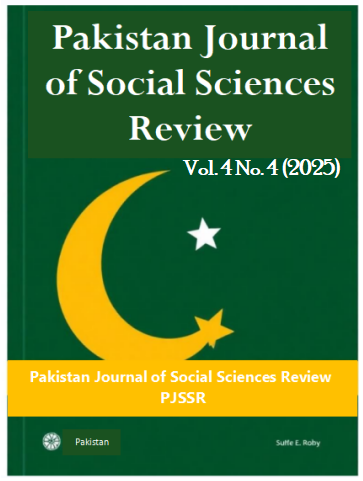THE HAUNTED BORDER: TRAUMA, MEMORY, AND NEO-IMPERIAL VIOLENCE IN NADEEM ASLAM’S THE WASTED VIGIL
Abstract
This article examines Nadeem Aslam’s The Wasted Vigil (2008) as a literary intervention that subverts the racialised, securitised US discourse surrounding the Pak-Afghan border in the post-9/11 era. Drawing on trauma studies, border poetics, and postcolonial theory, it argues that the novel constructs a bottom-up, Janus-faced borderscape that refuses the reductive frames of terrorism, extremism, and pathology imposed by imperial knowledge systems. Through its haunted architectural setting, fragmented narrative structure, and ethically complex character arcs, The Wasted Vigil foregrounds erased histories and unmourned lives—particularly those of women, children, and the disappeared—excluded from both state archives and Western trauma narratives. The article analyses key figures such as Marcus, Qatrina, David, Zameen, Casa, and Dunia, reading their stories as affective residues of empire, Cold War violence, and neocolonial militarisation. In rejecting narrative closure and aesthetic redemption, Aslam offers a literary counter-archive: one that grieves without spectacle, remembers without mastery, and unsettles the imperial grammar of the Af-Pak frontier. Ultimately, the novel reclaims the border as a site not of threat, but of memory, mourning, and resistance.
Keywords: Nadeem Aslam; The Wasted Vigil; Pak-Afghan border; trauma aesthetics; borderscape; Janus-faced border; post-9/11 discourse; imperial memory; subaltern resistance; postcolonial trauma; border poetics; unmourned lives; counter-archive


